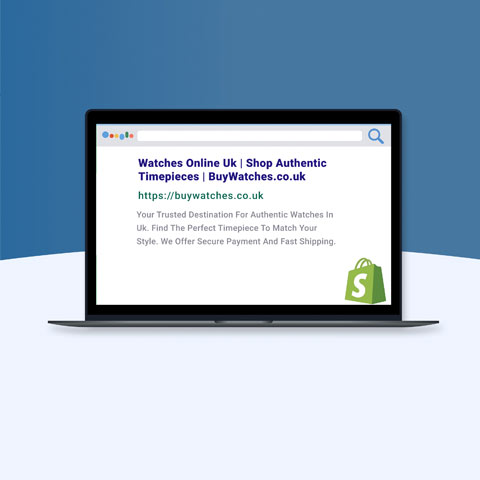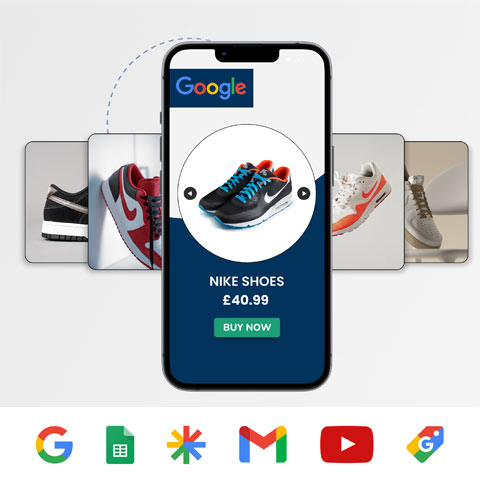Proven Strategies for Boosting Your eCommerce ROI


No matter the nature of your business or brand, it’s a safe bet that you want to know the digital marketing investments you make are worth the cost of the campaign. There isn’t a marketer out there who wouldn’t like to stretch their ad dollars a little further, and really make the most of their digital marketing budget on behalf of their brand.
Return on investment, or ROI, is as important to your business as the ads you create and place online. That’s because knowing how they’re performing gives you the critical information you need to make smart choices about future investments and campaigns.
With strategies for boosting search engine ROI and improving the customer experience, and tips on the best metrics for measuring your brand’s success, consider this your all-encompassing guide to e-commerce ROI. Identifying the digital marketing channels best equipped to improve your ROI, and learning how to optimize them for even greater success, can set your brand up for ongoing marketing performance online.
Here’s how.
Understanding E-commerce ROI
At its core, ROI is pretty simple: it’s a way to determine how much your investment has earned…or how much it cost you if you took a loss.
When the investment involves content marketing, ROI is the percentage you get when you compare the cost of creating and distributing content with the business revenue resulting from that ad spend. Take a look at the ROI formula below.
(Source)
If you’ve ever heard someone say “we’re ROI positive” or “we’re ROI negative,” that means just what you think it does: if you’re ROI positive, more money came in than went out. If ROI negative, the opposite happened, and you didn’t see a return on your spend.
Let’s look at an e-commerce example. Say you spent $200 on digital advertising, and you generated $400 in new revenue as a result of those ads. In this case, your ROI is 100%.
Another way of looking at it is that you made $2 in revenue from each dollar you spend on the campaign. You’re ROI positive, because your ad investment led to more revenue than what you spent on your ads.
There are a number of ROI metrics to take into consideration when you’re determining your results. These include:
- Number of leads
- Percentage of customers who buy a product
- Average price of a sale (minus discounts)
- Cost of ad production and any other billable hours
- Cost of ad spend
Other investments, from the cost of marketing tools to your employees’ salaries, can also come into play. It’s only by analyzing every aspect of your campaign that you can come up with an accurate idea of just how valuable your investment was for your brand.
While it would be nice if the equation was that cut and dry, there are still other ROI factors to consider when you’re calculating your results. ROI is specific to individual channels, meaning that a great ROI on a display ad campaign might seem lackluster when associated with an email campaign. For this reason, it’s wise to keep track of your results and perform A/B testing (more on that below) to get the most precise information on which investments make sense for your brand.
Next steps: Take a deep dive into the content marketing ROI metrics that matter most.
Conversion Rate Optimization for E-commerce Websites
Here’s another acronym for your repertoire: CRO. Short for conversion rate optimization, CRO is best defined as the process of increasing website visitors who perform a desired action.
Of course, that process couldn’t exist without the conversions themselves. In e-commerce, a conversion can be anything from making a purchase to opting into an email list, initiating a download, or sharing a piece of content with another shopper. It’s up to brands to determine which conversions are most important to them based on their short- and long-term business goals.
CRO is especially important for e-commerce sites for a number of reasons, all of which ultimately relate to revenue. These include:
- Increased sales. Regardless of the conversion, your campaign objective, and the conversions you’re hoping to boost, increasing your website conversion rate will help you generate more high-quality leads, which ultimately leads to more buyers.
- Increased high-quality leads. Those high-quality leads are likely to be genuinely interested in your products—which means they’re also likely to enjoy them, become loyal customers, and spread the word.
- Increased ROI. Since CRO is about optimizing the customer journey for consumers who are already visiting your list, you’ll get more bang for your marketing buck than you would with a broader approach.
- Increased brand affinity. CRO helps to create a smoother, more streamlined customer experience, which can lead to a more positive perception of your brand.
What does conversion rate optimization look like in action? Take a look at Tophatter, a global online marketplace offering a steady stream of live auctions. When the discovery-based shopping application needed to drive both desktop and mobile customers, they partnered with Taboola to reimagine creative and introduce data segments in an effort to attract new users.
Taboola tested headline and image combinations in its native ads, expanding ad reach to additional markets and demographics. As a result, Tophatter achieved a 3.7% higher conversion rate than all other paid channels, and a 4.7% higher number of clicks to day zero purchase than all other paid channels.
By optimizing and scaling the campaign, Taboola was able to help Tophatter maximize its native ad investment.
(Source)
Next steps: Read more about conversion rate optimization and its value for e-commerce websites.
Product and Pricing Strategies
There are other issues to consider when you’re looking to boost your e-commerce ROI, and these include product and pricing strategies. Sometimes, ROI is negatively impacted by pricing that isn’t in line with the competition. If that’s the case, the investments you make in advertising can only do so much. Once a potential buyer reaches your site, they may abandon their purchasing plans because they’re unwilling to pay a high price.
So how do you know how to price your products right? How can you make sure you remain competitive without losing money on sales? Here are a few tips.
- Do your homework. Conduct market research to determine what your competitors are charging for similar products, what discounts and specials they offer, and where your own pricing falls in comparison. This approach is known as competitor-based pricing.
- Know your worth. Another approach is to price your products based simply on what you believe your customers will pay. This is a common approach when offering products with high selling potential, like luxury and prestige brands that have cachet (think Louis Vuitton or Chanel). Other companies charge more because consumers value the brand’s commitment to sustainability, or connect with its overall mission (think Patagonia, known for supporting the environment and social causes). This is known as value-based pricing.
- Offer a deal. If your goal is to move a lot of goods, bundle pricing—offering discounts for multiple purchases, like buy-one-get-one deals—can be very useful.
- Be adaptable. Some brands make a point of changing their pricing as they go. Starting high and then lowering prices once competitors emerge (called price skimming) is one approach that’s popular in the tech space. If you’re new to the marketplace, you might try the opposite: come in with low pricing to attract customers, then raise your prices later on.
Whatever your approach, knowing both your objectives and your customers’ shopping habits is crucial to making the right choice.
Search Engine Optimization for E-commerce
Search engine optimization (SEO) has become one of the pillars on which a solid e-commerce strategy is built. It’s the process of boosting your search engine rankings, so that your site appears to users when they search for keywords and phrases related to your products and brand.
Research shows that more than 90% of people never click beyond the first page of Google search results. If you really want to increase awareness of your brand and drive qualified traffic to your site, you need to make sure your business shows up on that first page—and as prominently as possible.
It’s important that your e-commerce site is well-optimized for search. Why? Along with search engine marketing (SEM, which involves paying for sponsored posts that appear at the top of the search results page for added visibility), SEO allows you to harness search traffic and drive shoppers to your online store. With more than 89 billion visits to Google every month, having your site pop up in search results for users creates a valuable opportunity to generate sales.
A great way to do that is by optimizing your website for search. By incorporating relevant keywords into your site and product-related content, you can improve your search ranking naturally.
- Use Google’s Keyword Planner tool. Conducting keyword research can help you determine which keywords and phrases are most relevant for your brand and popular among internet users.
- Incorporate those keywords into your site content. This must be done in a way that feels natural to site visitors (avoid “keyword stuffing,” which makes content sound forced and can be penalized by search engines).
- Incorporate those keywords into your metadata/meta tags. This includes site title tags, product descriptions, image tags, file names, and other forms of “behind-the-scenes” content that users don’t see but that search engines consider when analyzing your site’s relevance to certain keywords.
- Generate backlinks, the links to your e-commerce site that appear on sites elsewhere online. Every time your site is featured in an article or gift guide, or on a blog, resource page, partner/distributor site, your search rankings stand to improve, so set a goal to obtain 20 to 30 high-quality backlinks per day—and make sure to get broken links fixed whenever possible.
- Publish sponsored content. By partnering with a well-respected publisher and posting branded content like an article about your business sector or topic related to your products, you can get additional backlinks while also proving to Google that your site is legitimate and worth listing.
(Source)
There are lots of other ways to increase traffic to your website, but taking these steps toward content optimization will help you improve your organic search results along with your ROI. By the way, the formula for calculating that is as follows:
SEO ROI = (gain from investment – cost of investment) / cost of investment
Next steps: Discover additional SEO strategies and best practices for your e-commerce brand.
How does PPC increase E-commerce ROI?
Another excellent way to increase e-commerce ROI is through PPC, or pay-per-click advertising. Unlike other forms of online advertising, in which marketers pay based on ad impressions, this form of paid advertising (also known as cost-per-click) is performance-based and therefore highly cost-effective. Through an auction model, you bid for ad space across advertising channels based on what you’d like to be charged for every click, and only pay when someone clicks on your ad.
PPC is often combined with native advertising—ads that blend seamlessly into the site environment, and a great e-commerce advertising solution as consumers grow increasingly resistant to traditional banner ads.
If you’re wondering what this looks like in action, check out this campaign Taboola created for Matas, Denmark’s largest beauty and personal care retailer. Matas needed to drive additional traffic to its product pages, and that required a high-performing ad channel and smart strategy for boosting conversions.
To help Matas engage shoppers, we built Image Ads and animated Motion Ads, both complemented by descriptions that provided additional pre-click information and impactful call-to-action (CTA) buttons. As a result of working with Taboola, Matas generated an 124% increase in return on ad spend (ROAS), exceeding their goals and engaging a brand-new pool of customers.
(Source)
Next steps: Check out these paid advertising tips from paid media experts.
Customer Experience and Retention in E-commerce
Customer experience is vital to every e-commerce growth strategy—a happy consumer is more likely to make a purchase than a dissatisfied one—but it also plays a part in improving your e-commerce ROI. A little goes a long way when it comes to creating a customer journey that keeps shoppers coming back; Hubspot reports that a 5% increase in customer retention can increase company revenue by 25% to 95%.
Optimizing your e-commerce customer experience is as simple as improving customer communications and refining the channels where your customers spend time interacting with your brand. These include your product pages, email newsletters, and even customer support. Here are a few easy ways to improve your customer experience.
- Personalize your content. Showing your customers content that’s in line with their interests and needs creates a more relevant shopping experience, and stands to generate additional sales.
- Offer discounts and free shipping. What customer doesn’t like a good deal? You can create a more positive perception of your brand while also boosting sales by introducing price breaks, volume discounts, and cutting down on shipping costs.
- Provide a seamless checkout experience. The easier you make it for your customers to buy online without any friction, the more sales you’re likely to get.
- Launch a loyalty program or subscription model. If your goal is to keep customers coming back, a loyalty or subscription is a great fit. These strategies are designed to help you retain customers—and you can use native advertising to increase customer retention even further, like razor brand Cornerstone, which increased membership by 2,100% when it ran a cost-per-acquisition campaign with Taboola.
Performance Metrics
No marketer can accurately measure their ROI without first gathering relevant data. Everything from website traffic to conversions and cart abandonment rates should be considered when you’re determining your return on ad spend (ROAS), customer acquisition cost (CAC), average order value (AOV), customer lifetime value (CLV), and more.
These key performance indicators (KPIs) will tell you whether your investments are paying off, and provide the insight you need to make improvements. One of the ways to do that is by employing A/B testing.
A/B testing is a helpful way to boost your ROI because it allows you to experiment with different approaches. If, for example, you’re not sure what type of native ad will work best for your brand, you can run two campaigns using two different creatives, compare your results, analyze your performance metrics, and see which strategy comes out on top.
Another way to measure your campaign performance is by taking advantage of tools that accurately track your results. When Barcelona-based floriculture brand Colvin wanted to drive purchases prior to Valentine’s Day, it utilized Taboola Pixel, which gathers data to help brands understand more about customer actions like site visits, purchases, account creations, and video views.
By incorporating Taboola Pixel into its sponsored content campaign, Colvin was able to drive 50% more purchases than their target goal at a CPA that was up to 90% lower than other channels.
(Source)
Next steps: Learn about landing page A/B testing and how it can improve your e-commerce KPI.
Optimized Mix of Strategies
An e-commerce sales strategy can take many forms beyond the ones we’ve discussed in this guide—which means there are countless other opportunities to improve ROI for your brand. Let’s take a quick look at six that should be on your radar.
- Social media engagement. If you have a social media presence, you have an da pop to drive those followers to your e-commerce site, creating social media engagement. Take the time to analyze that audience, and employ native ads on your social media channels that convert into site visits and sales.
- Email marketing. Your email newsletter may be beautifully designed, but are you seeing a return on investment from email marketing? Optimize your e-commerce strategy by introducing email automation and using proven strategies to create more effective campaigns that can lower your acquisition costs.
- Pre-landing pages. Sometimes customers need a little nudge before they’re ready to perform your desired action. Pre-landing pages are intended to improve conversion rates by “warming up” cold clicks from native ads with more information about your product. By demonstrating product results on the page, sharing product reviews, or telling a compelling story about how the product was made, you can motivate those site visitors to make a purchase.
- Monitoring your competitors. It’s always wise to know what your competition is doing to improve their ROI. Do your due diligence by monitoring competitors, tracking their progress and success, and experimenting with similar ideas.
- Artificial intelligence. More and more, brands have opportunities to use generative AI—a kind of artificial intelligence that can create different types of content and data—to improve the performance of their ad campaigns. For example, Taboola is now combining cutting-edge AI tools like ChatGPT and Stable Diffusion with our data-backed best practices, dynamic keywords, and more to generate ad variations and optimize creative for advertisers. It’s an approach that can take campaigns to the next level and have a tangible impact on ROI for e-commerce brands.
- Attribution models. A system for tying conversions back to specific marketing channels–like native ads–attribution models help you track your success, making it easier for you to replicate it down the line.
With this guide to boosting your e-commerce ROI, you’ll be ready to take advantage of every available strategy, mix and match techniques, and home in on the ones that work best for your brand.
As you evolve your e-commerce strategy, be sure to set goals and evaluate your ROI along the way. And don’t forget the importance of choosing a digital advertising partner that you can trust.
Increase your E-commerce ROI with Taboola.
Want more like this?
Want more like this?
Insight delivered to your inbox
Keep up to date with our free email. Hand picked whitepapers and posts from our blog, as well as exclusive videos and webinar invitations keep our Users one step ahead.
By clicking 'SIGN UP', you agree to our Terms of Use and Privacy Policy


By clicking 'SIGN UP', you agree to our Terms of Use and Privacy Policy
Other content you may be interested in
Categories
Categories

Want more like this?


Want more like this?
Insight delivered to your inbox
Keep up to date with our free email. Hand picked whitepapers and posts from our blog, as well as exclusive videos and webinar invitations keep our Users one step ahead.
By clicking 'SIGN UP', you agree to our Terms of Use and Privacy Policy





![[Research] Apps: The Secret Engine of Ecommerce Growth [Research] Apps: The Secret Engine of Ecommerce Growth](https://images.bizibl.com/sites/default/files/apps-and-web-similarweb-480.jpg)



